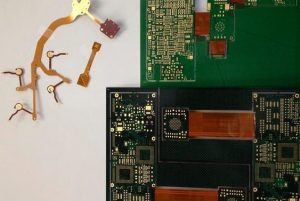Flex PCB Assembly Compared To Rigid Ones
One of the first questions many project teams face when launching an electronics design is whether to use a rigid PCB, a flex circuit, or a rigid-flex PCB. This decision must align with specific project requirements and environmental conditions, as well as budget concerns. Understanding the distinctions between these three types of PCBs — their designs, manufacturing processes, cost factors, and reliability — helps project leaders make the right choice for their product.
Rigid and rigid-flex PCBs both deliver excellent durability in harsh environments, proving to be the ideal solution for high-performance applications that require stability and flexibility. They have become a favorite for many industries, including the automotive, aerospace, and medical devices sectors. This specialized technology combines the best of both rigid and flexible components, providing an excellent option for space-saving designs. These circuit boards can withstand repeated flexing, shock applications, and high vibrations, and their structural integrity offers reliability in high-density applications.
Rigid-flex PCBs are exceptionally durable compared to rigid ones due to their unique construction and material options. Flex PCBs are typically made from thin, flexible polyimide films, which allow them to bend and flex repeatedly without damage. These features also enable them to perform under harsh environmental conditions, such as extreme temperatures and vibrations. Proper flex PCB design and careful selection of materials can also mitigate issues like fatigue and cracking, which may be caused by repeated bending.
Enhanced Electrical Performance: Rigid-flex PCBs have more room for layers, components, and interconnects than traditional rigid PCBs. This allows for more complex product designs and enhanced performance, particularly when it comes to impedance control and thermal management.

How Durable Are Flex PCB Assembly Compared To Rigid Ones?
Simpler Processes: Rigid-flex PCBs are generally produced with fewer steps than traditional rigid PCBs, which can reduce overall manufacturing expenses. The process is also more precise, resulting in less waste. Combined with the cost savings associated with economies of scale, these factors can make rigid-flex PCBs more competitive in larger production runs.
Flex PCBs are a great choice for projects with limited space, and they can provide a significant boost to the performance of your device. However, if your budget is more important than space considerations, then a rigid PCB is the right choice for you. By following industry-standard best practices, and working with a trusted manufacturer, you can achieve high-quality results that meet or exceed your expectations.
Flex PCB assemblies offer notable durability advantages over rigid ones in certain scenarios due to their flexible nature. Flex PCBs, made of flexible substrate materials like polyimide, can withstand bending, twisting, and folding without compromising their functionality, making them ideal for applications where repeated flexing is involved, such as wearable electronics, automotive systems, and medical devices.
Moreover, flex pcb assembly often eliminate the need for bulky connectors and cables, reducing points of failure and enhancing overall reliability. By integrating components directly onto the flexible substrate, flex assemblies minimize the risk of connection issues that commonly arise in rigid PCB designs due to solder joints and interconnects.